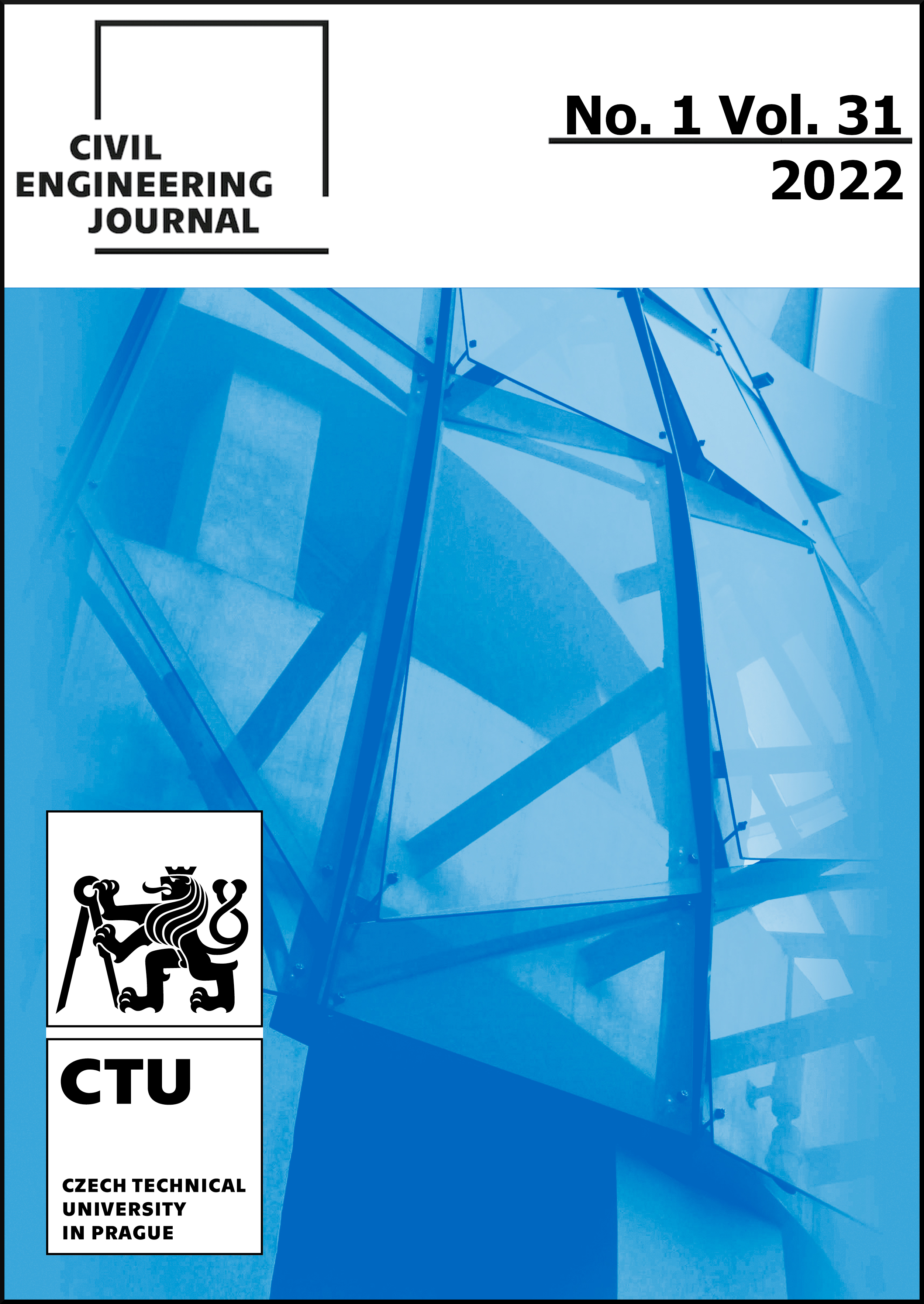Effect of Various Groins in a Series on Channel Bed Morphology: an Experimental Investigation
DOI:
https://doi.org/10.14311/CEJ.2022.01.0016Keywords:
Bank erosion, Combined groin, Deposition, Groin, Scour, Shore protectionAbstract
Alluvial rivers in Bangladesh are unstable keep changing their main channel, banklines, and so on. Groins are extensively used worldwide for shore protection from erosion, river navigation, beach reclamation among many other services. Improving the performance of groins is a crucial issue around the glove. Experimental investigations under clear water scour conditions have been conducted in this research to compare the performance of different groins in order to find out the suitable design of a groin. From the experimental runs, it is revealed that the groin models of different configurations behave in different ways. In the case of a solid I-shaped groin, a huge scour near the groin head and irregular bed pattern develop in the channel bed. While L-head and hockey-shaped groins improve the channel response a bit leading to decreased scour. Moreover, the hockey-shaped groin attracts the flow, and thus requires groin installation closely. The scour hole for a combined groin is relatively very small. As the scour endangers the stability of the groin structure, this turns out to be the most suitable one.
Downloads
References
Richardson E.V., Stevens M.A., and Simons D.B., 1975. “The design of spurs for river training.” In XVIth, IAHR congress (pp. 382–388). Sao Paulo, Brazil.
Pandey M., Ahmad Z., and Sharma P.K., 2018. “Scour around impermeable spur dikes: A review.” ISH J. Hydraul. Eng., 24(1), 25–44. doi:10.1080/09715010.2017.1342571
Pandey M., Valyrakis M., Qi M., Sharma A. and Lodhi A.S., 2020b. “Experimental assessment and prediction of temporal scour depth around a spur dike.” Int. J. Sediment Res. doi:10.1016/j.ijsrc. 2020.03.015
Sarveram H., Shamsai A. and Banihashemi M.A., 2012. Two-dimensional simulation of flow pattern around a groyne using semi-implicit semi-Lagrangian method. International Journal of Physical Sciences. 7, 2775-2783.
J Kang H. Yeo S.K. and Ji U., 2011. Permeability effects of single groin on flow characteristics, Journal of Hydraulic Research. 49:6, 728-735.
Quanhong L. and Pengzhi L., 2007. Numerical Simulation of Recirculating Flow Near a Groyne, The 2nd International Conference on Marine Research and Transportation, Ischia, Naples, Italy. 61-68.
Mahmoud R. Eltoukhy and Neveen B.A., 2012. Effect of Groin Geometry on Scouring of Sandy River Beds Having 180o Bend, Civil Engineering Research Magazine, Al-Azhar University. 34(3): 880-892.
Fukuoka S, Nakagawa N., Sumi T. and Zhang H., 2013. Advances in River Sediment Research; Taylor & Francis Group: London, UK.
Alauddin M. and Tsujimoto T., 2012. Optimum configuration of groins for stabilization of alluvial rivers with fine sediment. International Journal of Sediment Research (Elsevier publishing), Vol. 27, No. 2, pp. 158–167.
Bahrami-Yarahmadi M, Pagliara S., Yabarehpour E. and Najafi N., 2020. Study of Scour and Flow Patterns around Triangular-Shaped Spur Dikes. KSCE J Civ Eng. 2020; 24(11), 3279–3288.
Ettema R., Muste M., 2004. Scale effects in flume experiments on flow around a spur dike in flatbed channel. Journal of Hydraulic Engineering 130(7):635-646, DOI: 10.1061/(ASCE)0733-9429(2004)130:7(635)
Duan J.G., 2009. Mean flow and turbulence around a laboratory spur dike. Journal of Hydraulic Engineering 135(10):803-811, DOI: 10.1061/(ASCE)HY.1943-7900.0000077
Jeon J., Lee J.Y., Kang S., 2018. Experimental investigation of three-dimensional flow structure and turbulent flow mechanisms around a non-submerged spur dike with a low length-to-depth ratio. Water Resources Research 54:3530-3556, DOI: 10.1029/2017WR021582
Koutrouveli T.I., Dimas A.A., Fourniotis N.Th., Demetracopoulos A.C., 2019. Groin spacing role on the effective control of wall shear stress in open-channel flow. Journal of Hydraulic Research 57(2):167- 182, DOI: 10.1080/00221686.2018.1478895
Safie and Tominaga, 2020. Effects of pile arrangement on the flow around a pile-group groin. JSCE. 8, 207-220.
Alauddin M., Tashiro T. and Tsujimoto T., 2011. Experimental investigation of channel responses against different configurations of groins, Advances in River Engineering, JSCE, vol.17, 335-340.
Uddin M.N. and Rahman M.M., 2012. Flow and erosion at a bend in the braided Jamuna River. International Journal of Sediment Research. 27(4), 498–509.
Downloads
Published
Issue
Section
License
Copyright (c) 2022 Author

This work is licensed under a Creative Commons Attribution-NonCommercial 4.0 International License.
Authors who publish with this journal agree to the following terms:
- Authors retain copyright and grant the journal right of first publication with the work simultaneously licensed under a Creative Commons Attribution License that allows others to share the work with an acknowledgement of the work's authorship and initial publication in this journal.
- Authors are able to enter into separate, additional contractual arrangements for the non-exclusive distribution of the journal's published version of the work (e.g., post it to an institutional repository or publish it in a book), with an acknowledgement of its initial publication in this journal.
- Authors are permitted and encouraged to post their work online (e.g., in institutional repositories or on their website) prior to and during the submission process, as it can lead to productive exchanges, as well as earlier and greater citation of published work (See The Effect of Open Access).
How to Cite
Accepted 2022-03-29
Published 2022-04-30











